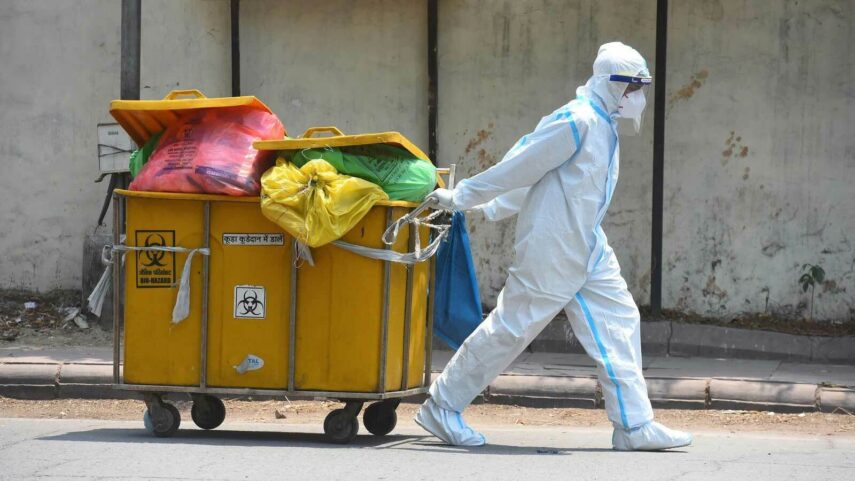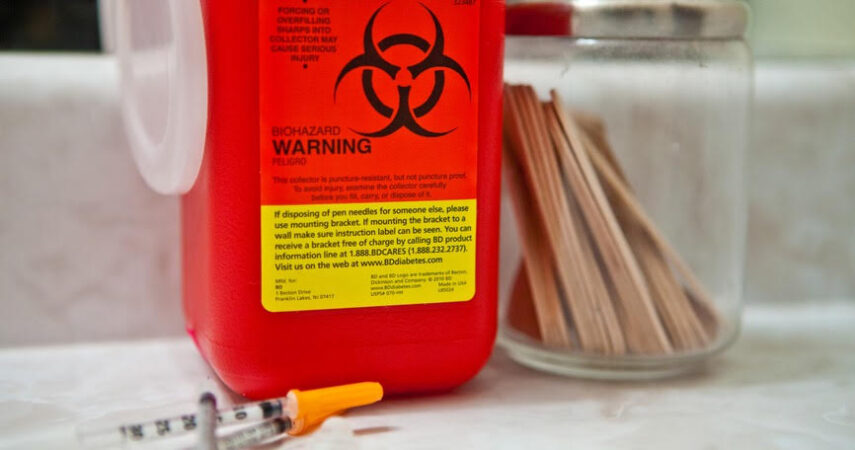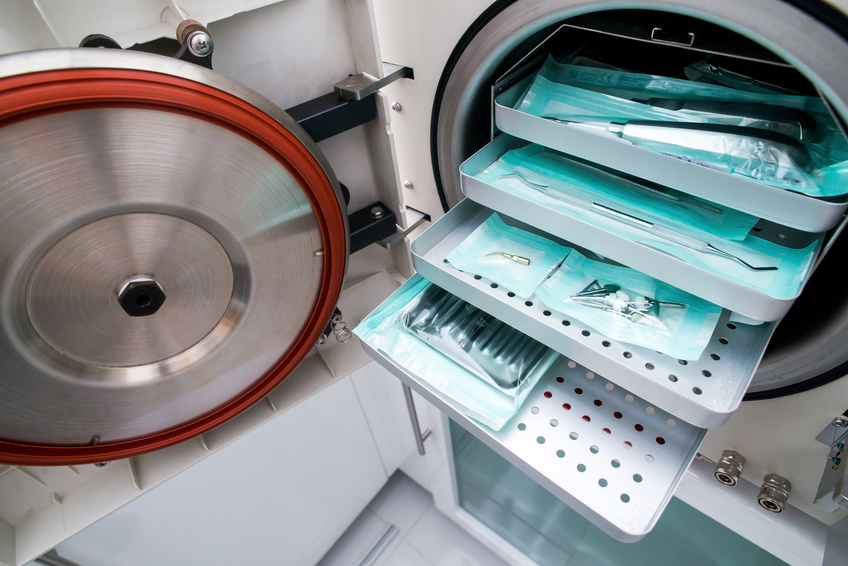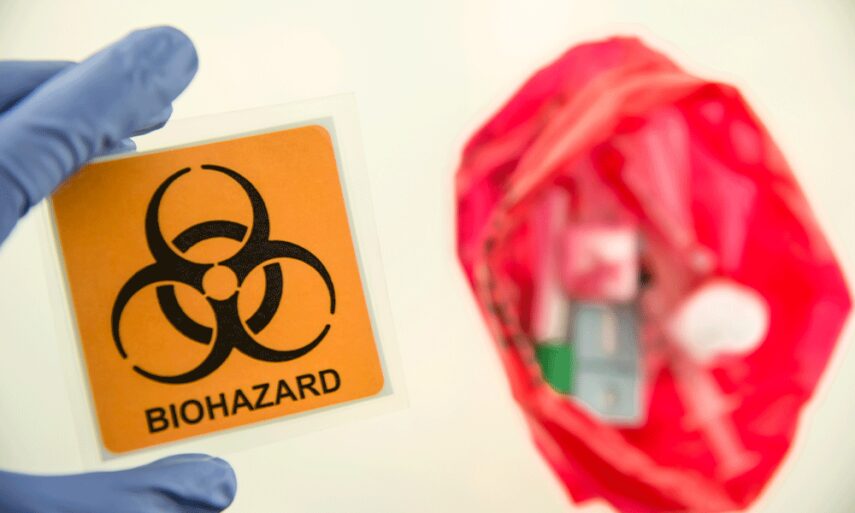Don’t let biohazardous and medical waste put your health business at risk! Learn how to properly dispose of this hazardous waste with these essential tips. With the right preparation and management, you can ensure that your health business is in compliance with applicable regulations.
Regulations for Disposal

Biohazardous and medical waste disposal regulations are imposed by local, state, and federal government entities to ensure the safe handling of biological materials. It is illegal for businesses to improperly store or dispose of biohazardous and medical waste in either residential areas or public collections systems, including sewers. Employers must adhere to all local, state, and federal regulations for biohazardous and medical waste management disposal in order to avoid fines, legal action, or criminal prosecution. If you are looking for professionals who can help you with this type of disposal, then you must definitely check out medwastemngmt.com.
In addition to the general legal requirements imposed by environmental regulations related to these types of disposal in both residential and public collection systems, most health businesses must also create an appropriate internal program for managing them. Businesses should:
- Identify their type of healthcare service(s).
- Determine what category each item falls under (including sharps such as needles).
- Develop a tracking system for disposing of hazardous wastes safely.
- Assess equipment needs based on the volume being handled.
- Establish procedures for proper packaging and transport of hazardous wastes in approved containers.
- Provide training to staff who handle hazardous materials.
- Adhere to departmental guidelines.
- Ensure compliance with local ordinances.
- Take more stringent security measures when dealing with infectious substances brought up from laboratories.
- Follow applicable disinfection protocols related to the destruction of infectious agents prior to discarding items.
- Utilize outside contracted resources when necessary.
- Properly label containers prior to transportation offsite from the care facility.
In sum, it is important that health businesses adhere strictly to all safety protocols established by implementing effective hazardous waste management strategies compliant with local/state/regulatory requirements.
Proper Storage

Proper storage of them is essential to ensuring the safety of health care workers, patients and other members of the community. To reduce the risk of improper management and potential exposures, waste must be stored away from areas with activities that are not related to its treatment or disposal, such as public access areas. Prior to transport, all containers used for collecting biohazardous and medical waste should be clearly labelled according to rules established by the local, state or federal government.
It is important that their containers be made of impervious plastic, metal or other non-porous materials that can effectively contain content even if breakage or puncture are to occur. The Biohazard symbol must be clearly visible on all containers used for storing biohazardous or medical waste. Whenever possible, it is also important to keep stored containers away from any combustible materials because many items commonly found in healthcare facilities may become flammable at times; therefore any accumulation of such items should be avoided in the vicinity where the storage facility may exist.
They should always be stored separately from regular trash cans or dumpsters. Appropriate room temperatures for storage need to be maintained such as refrigerated conditions for samples containing infectious agents in order to prevent potential exposures with hazardous materials contained within these wastes through microbial growth prior disposal.
Disposal Methods

When disposing them, care must be taken to ensure it will not come into contact with other individuals. Biohazardous waste refers to any object that contains or has come into contact with a biological substance. Medical waste is any material that was generated from a medical facility, such as bandages, hypodermic needles and other hazardous materials. It is important for health businesses to be aware of the correct disposal methods for these types of wastes in order to protect their customers and employees.
The following are some of the most common methods for disposing of biohazardous and medical waste:
- Autoclave Sterilization: Autoclave sterilization is the process where an item is exposed to extremely high temperatures and/or pressure in order to kill all microbial life. This process can be used on items such as syringes, lab equipment, spills, cultures, gloves and face masks.
- Incineration: Incineration involves burning the material at extremely high temperatures in order to reduce it to ash. This method is typically considered the safest means of disposing of biohazards since it reduces them to an inert state that cannot contaminate other materials or living organisms.
- Chemical Treatment: Chemical treatment involves using chemicals like bleach or formaldehyde solution which kills all microorganisms on contact. However, this method should only be used on small items such as tubes or vials due to safety concerns with larger volume chemical use.
- Landfills: Disposal sites regulated by federal, state and local governments are available in some areas for proper biohazardous and medical waste disposal. In addition to being held accountable by regulating agencies, approved landfills must also meet strict standards regarding capacity/volume limits, waterproof liner systems and water disinfection systems.
Benefits of Proper Disposal

Proper disposal of biohazardous and medical waste is essential and critical for maintaining a safe and healthy environment for workers, patients, clients, and the public. There are numerous benefits to properly disposing of biohazards, including reducing the risk of spreading diseases and infections and protecting workers from potential exposure. Additionally, many regulatory bodies require proper disposal as part of their standards.
By following existing recommended practices such as:
- Segregation by using three colors of bags (red for clinical risk (e.g., cultures), yellow non-sharp disposable items not containing bodily fluids (e.g., swabs), and blue for non-clinical waste which may contain bodily fluid)
- Confined disposal techniques
- Transportation protocols in accordance with applicable local regulations
all will contribute to successful waste management. Keeping these tips in mind during each stage of handling biohazardous/medical waste will help keep you compliant with all regulations as well as ensure that your workers stay safe while on the job.
Conclusion
Staying informed of best practices, properly labeling containers, conducting regular checks of containers, using the right disposal bin, training staff on safe handling procedures, using appropriate personal protective equipment, segregating biohazardous and medical waste materials when necessary, hiring a professional hazardous waste disposal company, adhering to local transportation laws and guidelines all contribute to reducing the risk of exposure. Following these basic steps will ensure a safe and compliant hospital or clinic while protecting both staff and patients from potential harm.
Related Posts:
- 6 Pros and Cons of Space Exploration – Is it a Waste…
- 6 Reasons Why the Home Warranty is Not Just a Waste of Money
- 5 Reasons Why Resident Evil 3 Remake is Waste of Money
- 12 Website Design Tips for Small Businesses in 2024
- 5 Time-Saving Spend Management Tips for Growing Businesses
- Translation Tips for Businesses Eyeing International…







